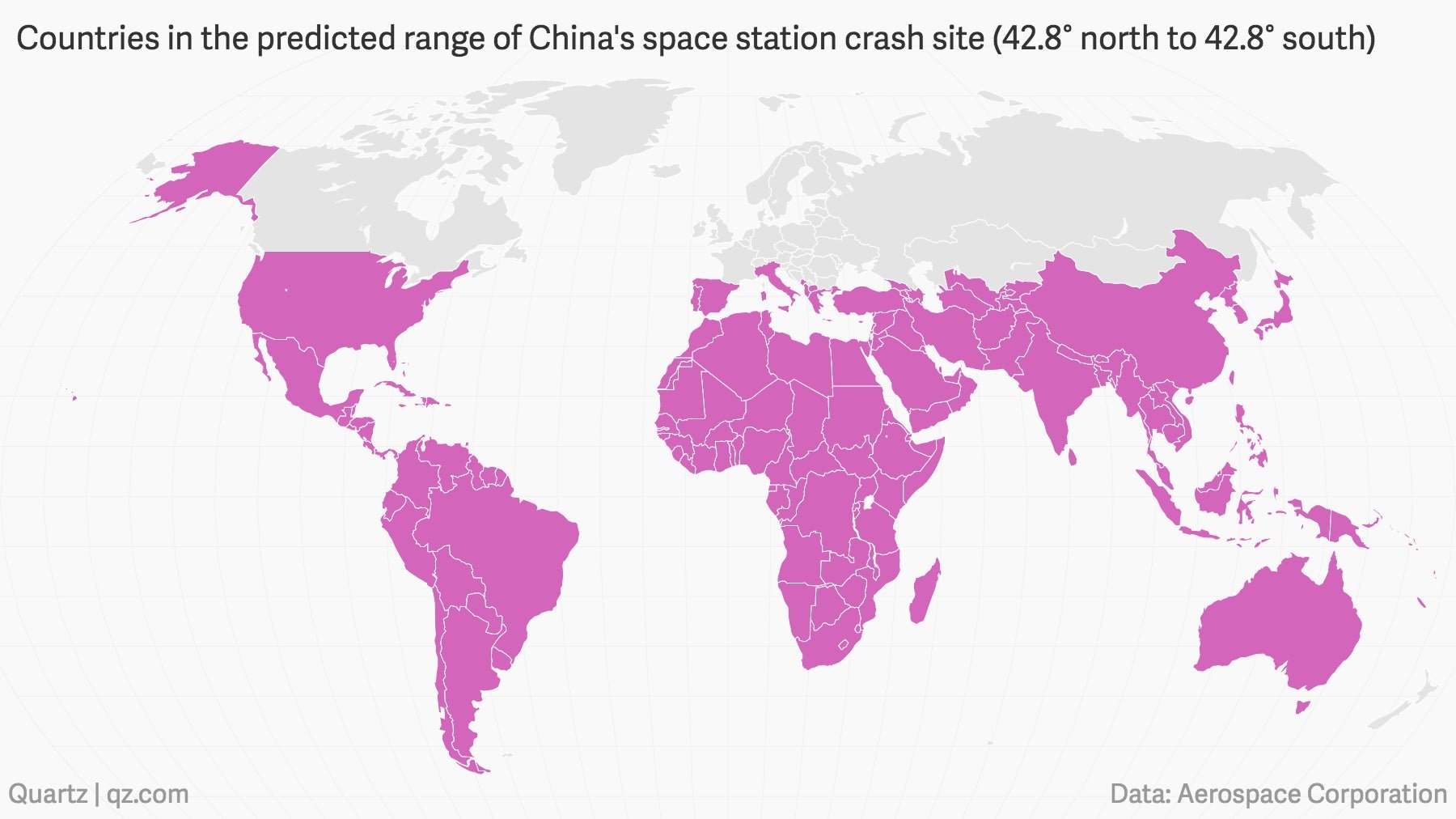China’s falling space lab made its fiery reentry over the South Pacific
The world has been tracking China’s defunct space lab Tiangong-1 as it made its way to Earth for several years. On Monday morning, China’s manned space agency said it had mostly burned up over the South Pacific at around 8:15am Beijing time, which was confirmed by the US Strategic Command.


The world has been tracking China’s defunct space lab Tiangong-1 as it made its way to Earth for several years. On Monday morning, China’s manned space agency said it had mostly burned up over the South Pacific at around 8:15am Beijing time, which was confirmed by the US Strategic Command.
Tiangong-1, the first Chinese space lab, was launched from the Gobi desert to great fanfare in 2011. A relatively small space lab (about 1/10th the size of the International Space Station), Tiangong-1 was meant as a sort of prototype for a more permanent station China hopes to have in space by 2022. The lab stopped working in 2016, and Chinese authorities later predicted the unmanned module would make its way down to Earth on its own by the end of 2017, a time frame that was later extended to the spring of 2018.
It became clear the module would re-enter the atmosphere uncontrolled, which isn’t ideal.
During a controlled reentry, ground controllers can use the engines of the space object to guide it towards an unpopulated area, such as an ocean. The path of the Tiangong-1, however, instead has been shaped by the drag in the Earth’s outer atmosphere, which is not constant. This made it particularly hard to predict exactly when and where it would land. Even just a day ahead, European Space Agency estimates put its reentry within a broad band that covered big swaths of virtually every continent.

In the end, any parts that did survive, landed in the ocean.
Even if that hadn’t happened, it would still have been very unlikely that any piece of the 8.5-metric-ton module would have come into contact with people because of burning up on re-entry. Also because of the location of the landing, it’s also unlikely that many caught the spectacle. It would’ve looked like slower-than-normal shooting stars splitting into other shooting stars, Holger Krag, head of ESA’s space debris office in Darmstadt, told The Guardian.
Some amateur astronomers say they did spot the sight—but on social media old footage is apparently also being circulated purporting to be of the Tiangong-1 re-entry.
—Tripti Lahiri contributed to this post
Update, April 2: This post was updated throughout after the space lab completed re-entry.